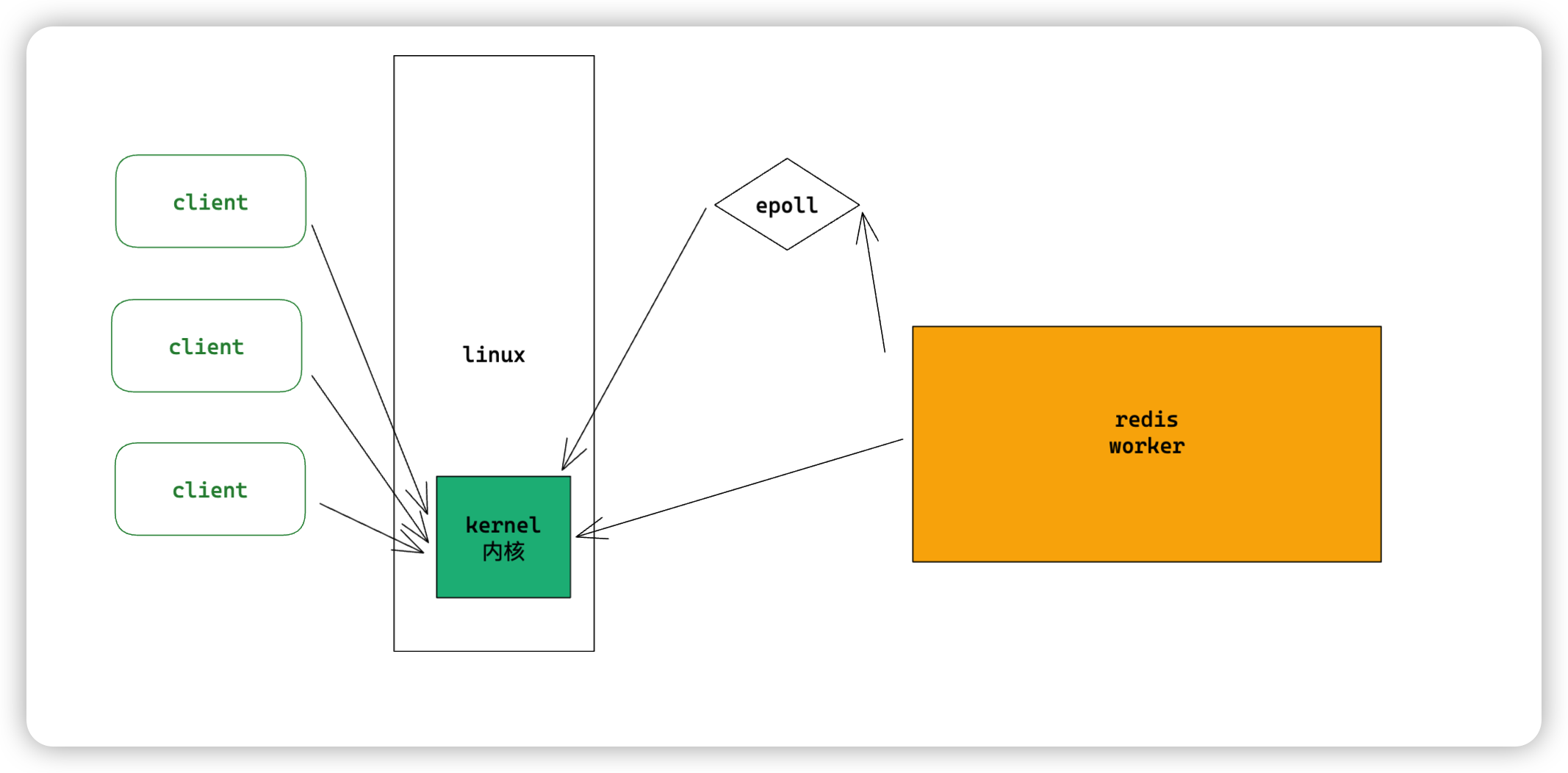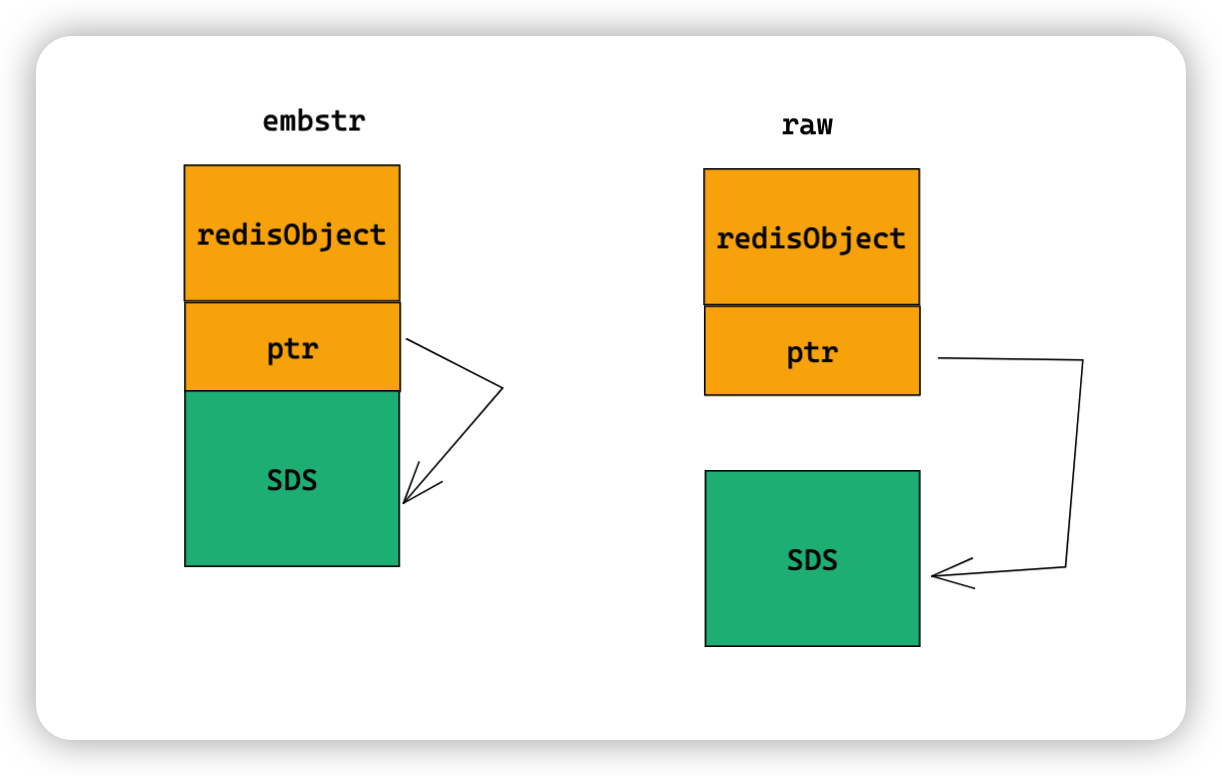redis
2022年9月29日大约 4 分钟
redis

redis是单线程的,一堆客户端的链接都是先到内核的,redis和内核之间使用epoll,也就是非阻塞的 IO 多路复用,redis就可以用一个线程使用epoll遍历很多客户端连接,哪个客户端有数据就来处理谁,左边是 IO 操作,右边是内存操作,内存操作的速度是远大于 IO 的操作的,所以redis线程对应很多连接是没有问题的。这里的处理的而且是redis的worker线程,redis还有别的线程去处理别的事情,比如持久化、异步删除等。
基本数据结构
typedef struct redisObject {
unsigned type:4;
unsigned encoding:4;
unsigned lru:LRU_BITS;
int refcount;
void *ptr;
} robj;
type:对外的数据类型,string、hash、list、set、zset,通过type命令看到的类型encoding内部实际保存类型数据类型,很重要,例如list其实分为ziplist quicklistlru缓存淘汰机制时使用refcount:引用计数,主要用于内存回收ptr:指向真实的数据存储
redis 数据类型
- String 字符串:底层是
Int简单动态字符串sds - Hash 哈希:底层是
ZipList Hashtable - List 列表:底层为
Ziplist quicklist双向循环链表 - Set 集合:底层为
intset hashtable - Zset 有序集合:底层为
Ziplist skiplist 跳表
String 字符串
Redis 自己构建了一个简单动态字符串:
sds
sds内部又可以转换为int、embstr、raw
127.0.0.1:6379>set a 1
ok
127.0.0.1:6379>type a
string
127.0.0.1:6379>object encoding a
"int"
127.0.0.1:6379>set b abc
ok
127.0.0.1:6379>type b
string
127.0.0.1:6379>object encoding b
"embstr"
127.0.0.1:6379>set c aaaaaaaaaaaaaaaaaaaaaaaaaaaaaaaaaaaaaaaaaaaaaasdasdsdsdasdasdsaddqwdqwdqwdwqdqwwqwqdqwqdwsadasdasdasdsa
127.0.0.1:6379>type c
string
127.0.0.1:6379>object encoding c
"raw"
- 值为
int的时候内部编码就是int - 值小于等于 44 字节的时候为
embstr - 大于 44 字节的时候为
raw
embstr:存储结构是一块连续的内存空间,请求一次就行了
raw:是不连续的内存空间,是需要请求 2 次

struct sdshdr {
unsigned int len; // buf 中已经使用的长度
unsigned int free; // buf 中未使用的长度
char buf[]; // 柔性数组 buf
};
设计原因:
- 效率,它单独保存了使用的长度,直接使用即可,复杂度为
O(1) - 防止数据溢出,SDS 是二进制安全的,通过
len来判断是否结尾,来进行扩充然后再来进行修改,不会像 string 一样判断\0是否为结尾 - 空间预分配,会先先查未使用的空间,满足就直接使用,不满足就再去扩充空间,可以有效减少内存分配的次数
- 惰性空间释放,字符串缩短时,并不会立即回收多余的空间,防止当重新修改时再进行预分配,就增加了内存分配的次数
查看源码:
sds.h和sds.c文件
reids在 3 版本后面进行了修改
文件地址https://github.com/redis/redis/blob/unstable/src/sds.h
typedef char *sds;
/* Note: sdshdr5 is never used, we just access the flags byte directly.
* However is here to document the layout of type 5 SDS strings. */
struct __attribute__ ((__packed__)) sdshdr5 {
unsigned char flags; /* 3 lsb of type, and 5 msb of string length 第三位保存头部类型,高5位代表保存字符串的长度 */
char buf[];
};
struct __attribute__ ((__packed__)) sdshdr8 {
uint8_t len; /* used 已存储的字符串长度 */
uint8_t alloc; /* excluding the header and null terminator 能存储的字符串的最大容量 */
unsigned char flags; /* 3 lsb of type, 5 unused bits */
char buf[]; // 存储字符串的数组
};
struct __attribute__ ((__packed__)) sdshdr16 {
uint16_t len; /* used */
uint16_t alloc; /* excluding the header and null terminator */
unsigned char flags; /* 3 lsb of type, 5 unused bits */
char buf[];
};
struct __attribute__ ((__packed__)) sdshdr32 {
uint32_t len; /* used */
uint32_t alloc; /* excluding the header and null terminator */
unsigned char flags; /* 3 lsb of type, 5 unused bits */
char buf[];
};
struct __attribute__ ((__packed__)) sdshdr64 {
uint64_t len; /* used */
uint64_t alloc; /* excluding the header and null terminator */
unsigned char flags; /* 3 lsb of type, 5 unused bits */
char buf[];
};
设计根本:针对不同大小的数据保存为不同的类型,为了节省内存空间。
源码地址:https://github.com/redis/redis/blob/unstable/src/sds.c
redis 会对字符串长度进行判断,根据长度的不同选择不同的结构,其中embstr对应的就是SDS_TYPE_8,而raw则代表其他更大的数据类型。
static inline char sdsReqType(size_t string_size) {
if (string_size < 1<<5)
return SDS_TYPE_5;
if (string_size < 1<<8)
return SDS_TYPE_8;
if (string_size < 1<<16)
return SDS_TYPE_16;
#if (LONG_MAX == LLONG_MAX)
if (string_size < 1ll<<32)
return SDS_TYPE_32;
return SDS_TYPE_64;
#else
return SDS_TYPE_32;
#endif
}
Loading...
